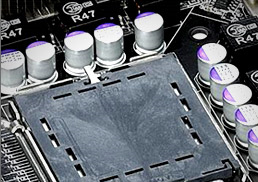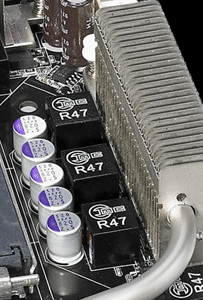Asus P5N32-SLI: Dual x16 - What Dreams Are Made On . . .
by Gary Key on October 27, 2005 12:05 AM EST- Posted in
- Motherboards
This line as spoken by the magician Prospero in William Shakespeare's whimsical play, "The Tempest", reminds us of the uniqueness of the human mind and the fleeting amount of time that we are around to utilize it."We are such stuff, As dreams are made on and our little life
Is rounded with a sleep..."
The Asus P5N32-SLI Deluxe that we will review today is also very unique in several ways and like most computer products in the current marketplace, its life span will be fleeting. However, for those of you who have the opportunity to utilize it, you will find what dreams are made on.
I will say this up front; this is one of the better motherboards that I have had the opportunity to use in the last 20 years. In fact, this board deserves additional testing time in order to explore fully and extract all of its performance potential. In keeping with what we believe is the best option for the current Intel processor lineup, the Pentium D series, we did not test a single core processor on this board. However, based upon the results that we extracted from the 840EE and 820D processors, we will be testing a single core processor on this board in the near future.
While it does not have the quad graphics capability of the Gigabyte GA-8N SLI Quad, the stellar layout of the MSI P4N Diamond, or the extensive feature set of the Gigabyte GA-8I955x Royal that was reviewed recently, this board's capability more than exceeds the sum of its parts. Yes, it does have some quirks as most products will, but Asus has engineered a truly remarkable motherboard utilizing the revised NVIDIA nForce4 Intel Edition SLI for the Northbridge and the NVIDIA nForce4 SLI for the Southbridge resulting in the x16 designation.


 |
 |
One of the main design features that Asus engineered into this board is an exclusive 8-phase voltage regulator power design that can significantly lower operating temperatures while reducing input ripple current and output ripple voltages . In fact, the input ripple current is over three times lower than a traditional 4-phase design while output ripple voltages are four times lower. The power consumption compared to the 4-phase design is about 10% less while the 8-phase design has the advantage of quicker transient responses and increased dependability due to lower thermal values.
What all this means is that your system will run cooler and overclock better compared to other solutions. In fact, through informal testing utilizing the BIOS readings, we found our Intel Pentium 840EE was on average running about 5c cooler in the Asus board compared to other solutions in the same test setup and ambient conditions. We will be conducting more thermal tests with scientific instrumentation in the near future. Our average overclocks were around 5% better than the other boards at more aggressive memory timings and with lower voltages required to the chipsets. While this does not sound like much, the ability of this board to run a CPU that previously topped out in the 3.9GHz range at up to 4.2GHz is impressive. The Asus P5N32-SLI Deluxe was an extremely stable board throughout our testing and did not fail a single time throughout two weeks of varying tests and conditions.
Let's see what this board is capable of now.










70 Comments
View All Comments
Gary Key - Thursday, November 3, 2005 - link
Please email me and I will forward a picture of the remaining inductors without the heatsinks attached. There are eight of them and the picture is high-res so you can make out the various numbers.danidentity - Thursday, October 27, 2005 - link
Does Anandtech plan on reviewing the AMD version of this board? The A8N32-SLI Deluxe?Gary Key - Thursday, October 27, 2005 - link
Yes, Wesley will have it completed shortly.Tanclearas - Monday, October 31, 2005 - link
I look forward to that, particularly compared to the A8N-SLI Premium. I find it highly dubious that x16 SLI shows such noticeable improvements over x8 SLI. I'm not saying it's impossible, but I am definitely skeptical. I would guess there is something else going on between those two boards.Gary Key - Monday, October 31, 2005 - link
Please note that I stated in the article- and -We found anywhere from a 3% to almost 11% difference between the x8SLi and x16SLI configurations with the first 3% coming from differences between the two respective board suppliers and the additional 7~8% coming from the additional bandwidth/optimizations at the higher resolutions between the two boards. The driver set utilized (81.85), video cards (7800GTX), applications (GPU intensive F.E.A.R.), driver settings (AA/AF on), and cpu combination account for the difference. We will have additional information on this in future articles including different game benchmarks were the differences are not as great but the base improvement still exists. There is a true base difference between the two configurations (could vary by board design) with the 81.85 driver set accounting for the majority of the difference after this initial improvement.
Tanclearas - Monday, October 31, 2005 - link
No need to get defensive. I just think that a single comparison of two boards (from two different manufacturers) does not make a conclusive argument for those improvements being from x16 vs x8 SLI configurations. If the tests show the same pattern for the A8N-SLI Premium and A8N32-SLI, then I will start to believe that the additional PCIe bandwidth is indeed what is behind the increases. Right now, we have a sample of one, which should never be the basis of a conclusion.Gary Key - Monday, October 31, 2005 - link
I am not getting defensive and did not mean for the message to come across that way. I had clearly stated that several factors played into the equation and I agree the additional bandwidth is only part of the equation. However, the same base advantage held true over the MSI P4N with the Gigabyte Quad board with the 78.01 drivers and in SLI operations with the 81.84 and 81.85 beta drivers. I agree about testing x8sli against x16sli from the same manufacturer but in this case the x8sli board would have been the P5ND2-SLI Deluxe which had severe issues in several areas. In this example the argument would have made that testing any another x8sli board would have been more beneficial for results. ;->breetai72 - Monday, October 31, 2005 - link
Are the benchmarks used for comparison from old reviews or did you rerun the tests again for this review? If so, the results aren't worth comparing to given what you said about difference in drivers, etc.I find it very hard to believe that any graphics setup is exceeding the bandwidth of a x8 slot. The private pixel bus handles most of the traffic anyway.
Gary Key - Monday, October 31, 2005 - link
I reran all of the benchmarks for this article and also standardized on DDR2-667 at 3-2-2-8-1T as stated on the Test Setup page. There was no difference in numbers between the beta 81.85 and whql 81.85 drivers we used for the article. The 7800GTX SLI setup has the ability to exceed the x8 slot capacity and this is shown in the base benchmarks. I am sure the next article to be published will further show the differences between x8sli and x16sli. ;-) However, I will state once again that the main increases will come from the 81.85 drivers, certain GPU intensive games, 7800GTX SLI setup, additional AA/AF settings, and higher resolutions.Gary Key - Monday, October 31, 2005 - link
Should be- "different game benchmarks where the differences". I hit the enter button accidently before checking my spelling.